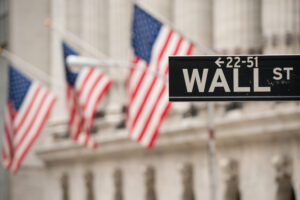
Wall Street Sees Gold Nearing $3,000 after Soaring More than 20% This Year
The comments below are an edited and abridged synopsis of an article by Jason Ma, Fortune
Gold has been on a remarkable run in 2024, outperforming the broader US stock market and attracting increasing attention from Wall Street as the Federal Reserve edges closer to potential rate cuts. The precious metal has surged by 21% this year, surpassing the S&P 500’s 16% gain. On Friday August 16, gold hit a record high, reaching over $2,500 per ounce, marking a significant milestone.
This rise in gold comes amid mixed economic signals. While recession fears eased after a weak payroll report sparked concern, other indicators such as softness in the housing market have fueled expectations for more aggressive Fed rate cuts. Historically, gold tends to rally when interest-bearing assets like bonds become less attractive, as lower rates diminish the appeal of yields.
Commerzbank Research recently revised its forecast for gold, predicting a strong performance driven by anticipated Fed rate cuts. Senior commodity analyst Carsten Fritsch projected three cuts by the end of this year and three more in the first half of 2025—two more than initially expected. He believes gold could rise to $2,600 per ounce by mid-2025 before slightly easing to $2,550 as inflation returns and speculation over future rate hikes resumes.
Other analysts share a similarly optimistic outlook. Bart Melek, global head of commodity strategy at TD Securities, suggested that gold could climb to $2,700 per ounce in the coming quarters due to the prospect of ongoing Fed easing. Patrick Yip, senior director of business development at American Precious Metals Exchange, even predicted that gold could reach $3,000 as soon as next year if geopolitical uncertainty persists, rate cuts continue, or global central banks ramp up their gold purchases.
Central banks, in fact, have been significant drivers of gold demand. Countries like China, Turkey, and India have been diversifying their reserves away from the U.S. dollar, especially after witnessing the freezing of Russia’s dollar assets following its invasion of Ukraine. According to JPMorgan’s estimates, central banks purchased over 1,000 metric tons of gold last year, with China’s central bank leading the way through an 18-month buying spree. India’s central bank also significantly boosted its gold reserves in June 2024.
The economic landscape remains fragile, with lingering fears of a potential recession that could further bolster demand for gold as a safe-haven asset. Mark Spitznagel, founder and CIO of Universa Investments, has expressed concerns about an impending recession, predicting that the largest market bubble in history is on the verge of bursting. He argues that the magnitude of this looming crisis is unprecedented, reinforcing the appeal of gold in uncertain times.
As the Fed continues to navigate economic challenges and global uncertainties persist, gold’s role as a store of value and safe-haven asset is becoming more prominent. Investors are increasingly turning to gold to hedge against market volatility and currency risks, making it a key player in the evolving financial landscape. With predictions of further gains on the horizon, gold’s momentum shows no signs of slowing down.

